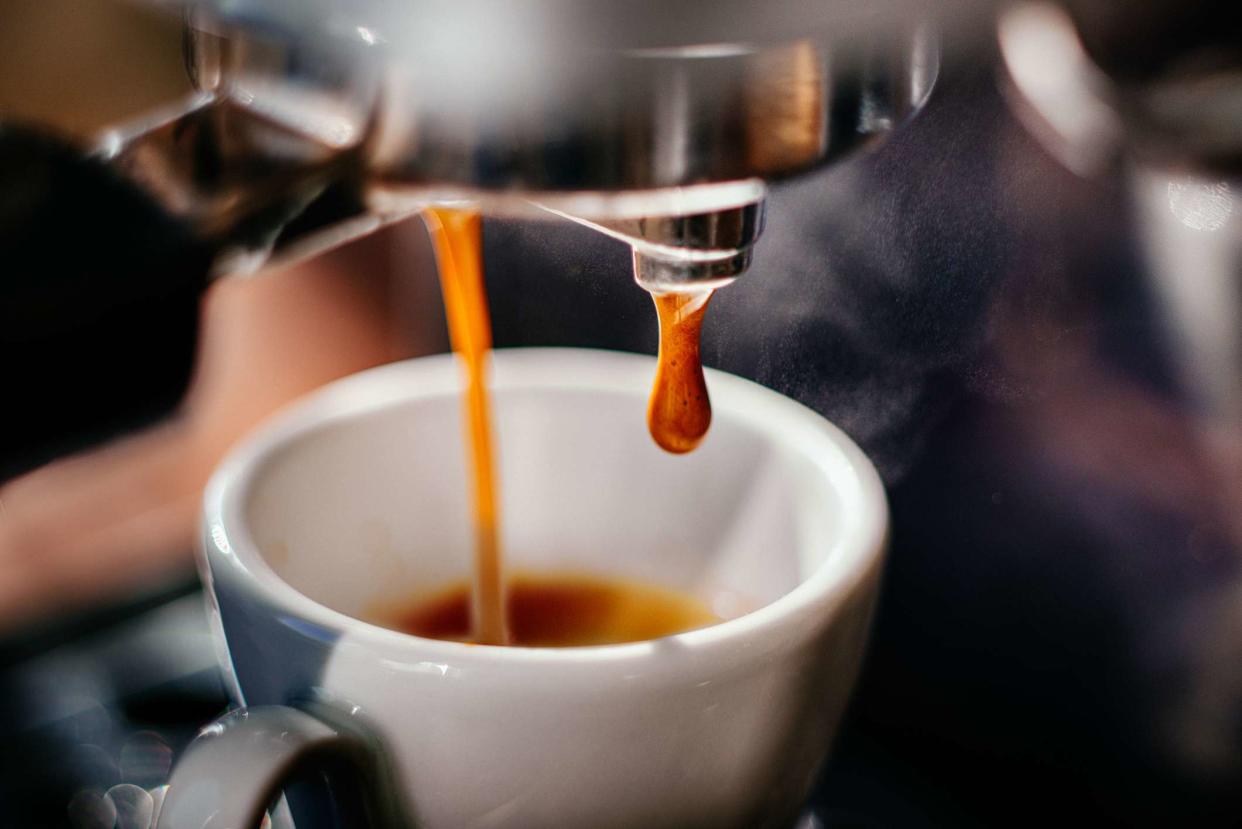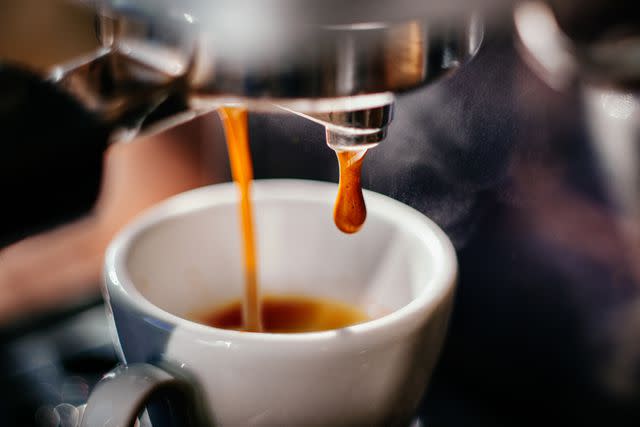Causes of a Caffeine Withdrawal Headache and How to Fix It

Medically reviewed by Phoowanai Ektheerachaisakul, RDN, CDN, CNSC
A caffeine withdrawal headache can happen if you miss your usual morning cup of coffee or mid-afternoon cup of tea. However, compared to other types of headaches, a caffeine headache can be easy to identify and treat.
This article covers six ways to get rid of a caffeine withdrawal headache. It also discusses the causes of caffeine withdrawal headaches, the other symptoms that can go along with them, and how you might be able to prevent them.

Learn More:Does Caffeine Help Headaches or Make Them Worse?
What Causes Caffeine Withdrawal Headaches?
Caffeine is the most-used drug in the world. In the United States, approximately 90% of adults report drinking caffeinated beverages, like coffee, tea, and soda, every day.
Although caffeine is considered a drug, experts do not agree on whether it qualifies as an addictive substance.
Research has demonstrated that regular use of caffeine can lead to:
Increased tolerance
Withdrawal symptoms
However, caffeine does not fit the commonly accepted definition of an addictive substance. For example, a 2010 study showed that caffeine does not activate the dependence and reward system in the brain.
Still, caffeine use disorder is recognized by the medical and psychiatric community. In 2013, caffeine use disorder was added to the Diagnostic and Statistical Manual of Mental Disorders, 5th Edition (the DSM-5) under the broader category of substance use disorders.
Related:Does Coffee Lower Your Risk of a Stroke?
Research suggests that about half of people who consume more than 200 mg of caffeine a day will get a withdrawal headache if they abruptly stop.
It's not clear why other people do not get symptoms when they reduce their caffeine intake, but it might have to do with individual caffeine sensitivity.
That could also explain why a person who is more sensitive to caffeine might get withdrawal symptoms even if they only regularly consume about 100 mg of caffeine a day.
Timing and other lifestyle factors can also influence caffeine withdrawal symptoms. For example, a person who only drinks coffee during the workweek may get caffeine headaches over the weekend when they have paused their intake.
If a person needs to stop eating before a medical test or procedure they might get a fasting headache, which is sometimes attributed to caffeine withdrawal.
Learn More:What Are the Signs of Caffeine Overdose?
Sources of Caffeine
While coffee is one of the most popular caffeine beverages, there are many other sources of caffeine that are natural and manufactured.
Common dietary and supplemental sources of caffeine include:
Tea (including black, green, chai, matcha, and oolong)
Soda
Energy drinks or "shots"
Coffee-flavored ice cream or yogurt
Chocolate (especially dark and bittersweet)
Other-the-counter (OTC) and prescription medications and nutritional supplements
Related:When to Stop Drinking Caffeine Before Bed
Researchers also think that OTC and prescription drugs that have caffeine in them, such as Excedrin and the headache medications Fioricet and Fiorinal, can lead to "rebound headaches" or "medication overuse headaches."
While research has not concluded that caffeine is to blame, withdrawal might play a role in triggering a headache when someone who regularly takes these medications suddenly stops.
According to the World Health Organization (WHO), taking larger doses of these medications might be a key factor, but headaches can also occur in people taking smaller doses every day.
The common ingredients in most OTC headache medications, such as aspirin and other painkillers, may also contribute to the "rebound effect."
Starbucks Tall Latte | 12 oz | 75 mg |
Starbucks Grande Latte | 16 oz | 150 mg |
Starbucks Coffee Short | 8 oz | 130 mg to 190 mg |
McCafe Coffee | 12 oz | 110 mg |
Black Tea | 8 oz | 40 mg |
Green Tea | 8 oz | 25 mg |
Mountain Dew | 12 oz | 54 mg |
Cola | 12 oz | up to 71 mg |
Red Bull | 8 oz | 80 mg |
Hershey's Chocolate Bar | 1.55 oz | 9 mg |
Starbucks Hot Chocolate, grande | 16 oz | 25 mg |
Excedrin Migraine | 2 pills | 130 mg |
Learn More:Is Caffeine Good For You?
6 Treatment Options for Caffeine Withdrawal Headaches
There are a number of steps you can take to ease a caffeine withdrawal headache, from consuming a cup of coffee to taking medication.
Consume Caffeine
The fastest remedy for a caffeine withdrawal headache is to drink a caffeinated beverage. Most people will get relief from a caffeine withdrawal headache within an hour of consuming about 100 mg of caffeine.
In a 2017 study of people with migraines, adding a dose of acetaminophen to the caffeine provided even faster relief.
While the caffeine content of coffee varies based on the blend and how it's brewed, an 8-ounce cup of regular brewed coffee typically has between 80m to 150 mg of caffeine, though some brews have closer to 250 mg.
As with coffee, the caffeine content of tea depends on the blend, the temperature of the water that it was brewed in, and how long it steeps.
According to survey data from the USDA, the average 8-ounce cup of hot, brewed, black-leaf tea has about 50 mg of caffeine.
Take an OTC Pain Reliever
Over-the-counter (OTC) pain relievers such as aspirin, ibuprofen, acetaminophen, or naproxen can help ease a headache and other symptoms of caffeine withdrawal.
Excedrin, a combination of acetaminophen, aspirin, and caffeine, can be helpful for headaches caused by caffeine withdrawal.
However, this type of medication can also contribute to rebound headaches, especially if it's used long-term.
Related:Are Caffeine Naps Helpful?
Drink Water
Staying hydrated can help prevent caffeine withdrawal headaches, particularly for people who get migraines (which can be triggered by dehydration).
Focusing on your non-caffeinated fluid intake will also help you adjust to not having coffee, tea, and soda as a regular part of your day. If plain water feels like a boring replacement, experiment with ways to make it more interesting like adding some sliced fruit.
Apply Peppermint Oil
Applying peppermint oil to your head and temples may help relieve pain. You can buy this product online or in drug stores.
While there haven't been many robust studies on the connection between peppermint oil and headaches, one study found that applying menthol (the main ingredient in peppermint oil) to the head worked better to reduce pain in people with migraines than a placebo.
Perform Acupressure
It's possible that applying pressure on certain areas of the body—called pressure points or acupoints—can help relieve head pain. The idea behind acupressure is that stimulating these points can relax muscles and improve blood flow.
One common headache-relief pressure point is found on the back of your hand, in between your thumb and index finger. Try stimulating it by pressing on it and moving your thumb in small circles for two to three minutes. Then repeat on the other hand.
Rest
It's possible that resting can reduce your head pain. Resting in a dark room is a go-to treatment option for people with migraines.
However, if napping tends to make your headaches worse or cause a headache, this option may not be best for you.
Related:Why Dehydration Triggers Headaches
How to Lower Your Caffeine Intake (Without Getting a Headache)
If your goal is to cut back or eliminate caffeine from your diet, there are steps you can take to do this while avoiding a caffeine withdrawal headache.
Learn More:How to Get Through Caffeine Withdrawal
Research has found that the most effective way to prevent caffeine withdrawal symptoms is to slowly and gradually reduce your caffeine intake.
The amount you'll need to reduce each day and how long it takes you to completely cut caffeine out of your diet will vary. Most recommendations say to gradually lower your caffeine intake over two to six weeks to avoid withdrawal symptoms.
Learn More:Can Caffeine Make Your Blood Pressure Go Up?
Other Symptoms of Caffeine Withdrawal
Caffeine headaches usually start within 12 to 24 hours of stopping caffeine. This type of headache is usually moderately to severely painful. It tends to be located on both sides of the head and gets worse with physical activity. The pain will usually peak after one or two days without caffeine and can last for two to nine days.
Caffeine withdrawal headaches can be accompanied by other symptoms, including:
Drowsiness
Poor concentration
Depression
Anxiety
Irritability
Nausea and vomiting
Muscle aches and stiffness
The amount of caffeine you usually consume might influence when you will start to feel caffeine withdrawal symptoms. It can also influence how long your symptoms will last.
However, research suggests that most people start to feel better from caffeine withdrawal within a week.
Related:Could You Be Allergic to Caffeine?
Summary
Caffeine can be the ultimate paradox for headaches: while it has been shown to help treat migraines and tension-type headaches, regular caffeine intake has also been linked to chronic migraines and medication overuse headaches.
Even if you don't usually get headaches, you might get one if you reduce or stop your usual daily caffeine intake.
If the symptoms of caffeine withdrawal become hard for you to manage, consider cutting it out of your diet, or only having it in moderation.
Related:Does Caffeine Boost Your Memory?
Frequently Asked Questions
What supplements help with caffeine withdrawal?
There are no specific supplements for symptoms of caffeine withdrawal, but you might find using OTC pain relievers like ibuprofen helpful for headache pain.
If you want a more natural approach, simply drinking enough water can often get rid of a caffeine headache and may even help prevent one.
What's a substitute for caffeine that won't cause headaches?
There are a lot of foods and beverages that contain caffeine, so you might find it challenging to avoid it. One of the simplest swaps for caffeine is water, which is hydrating and can help if you have caffeine withdrawal symptoms.
If you're used to getting energy from caffeine, you might be tempted to switch to sweet beverages and snacks for a quick boost.
However, try to avoid making this your replacement, as sugar can cause crashes and contribute to health concerns over time.
Read Next:Can I Get a Headache After Eating Sugar or Fasting from Sugar?

